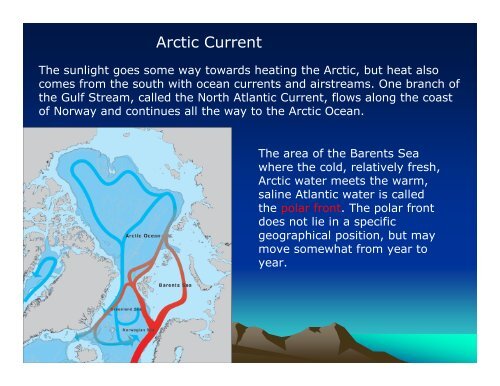The seasonal burden of Dimethyl sulphide-derived aerosols in the ...
The seasonal burden of Dimethyl sulphide-derived aerosols in the ...
The seasonal burden of Dimethyl sulphide-derived aerosols in the ...
Create successful ePaper yourself
Turn your PDF publications into a flip-book with our unique Google optimized e-Paper software.
Arctic Current<br />
<strong>The</strong> sunlight goes some way towards heat<strong>in</strong>g <strong>the</strong> Arctic, but heat also<br />
comes from <strong>the</strong> south with ocean currents and airstreams. One branch <strong>of</strong><br />
<strong>the</strong> Gulf Stream, called <strong>the</strong> North Atlantic Current, flows along <strong>the</strong> coast<br />
<strong>of</strong> Norway and cont<strong>in</strong>ues all <strong>the</strong> way to <strong>the</strong> Arctic Ocean.<br />
<strong>The</strong> area <strong>of</strong> <strong>the</strong> Barents Sea<br />
where <strong>the</strong> cold, relatively fresh,<br />
Arctic water meets <strong>the</strong> warm,<br />
sal<strong>in</strong>e Atlantic water is called<br />
<strong>the</strong> polar front. <strong>The</strong> polar front<br />
does not lie <strong>in</strong> a specific<br />
geographical position, but may<br />
move somewhat from year to<br />
year.

















